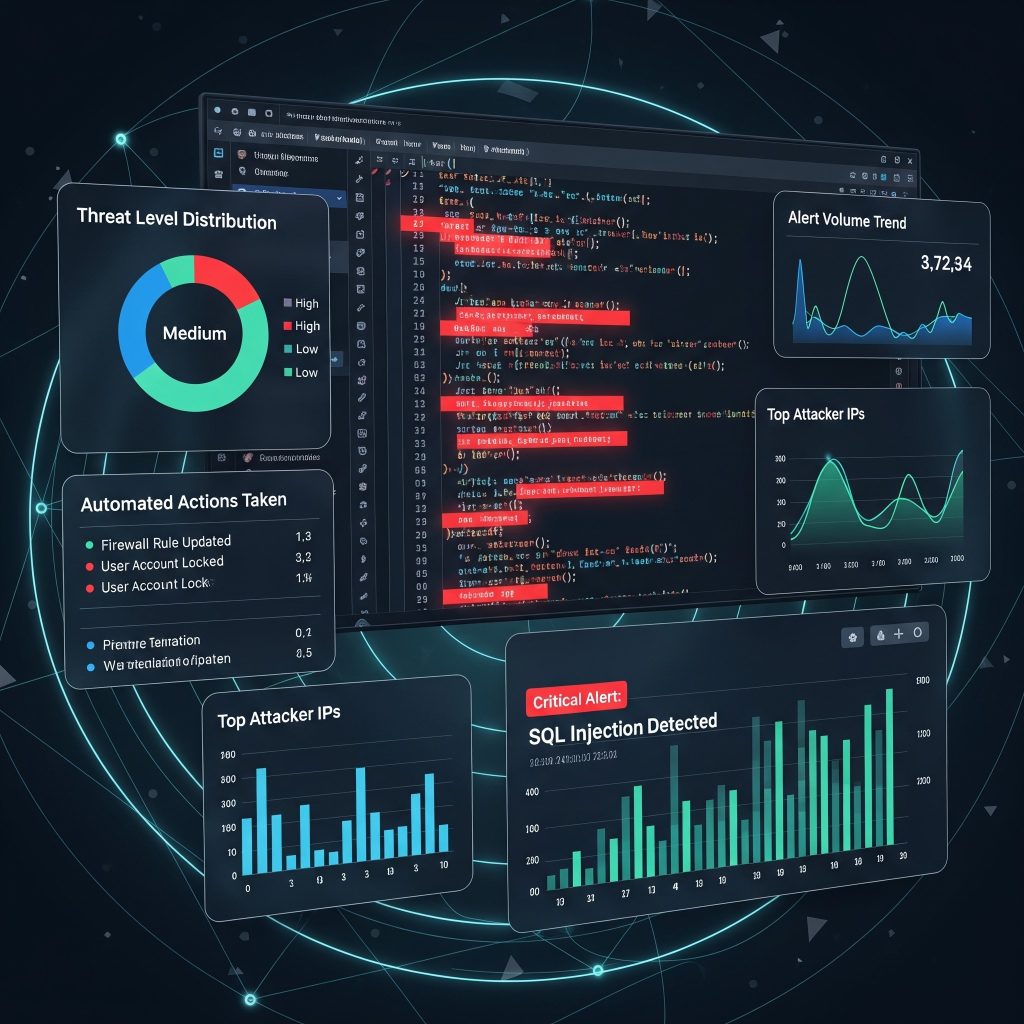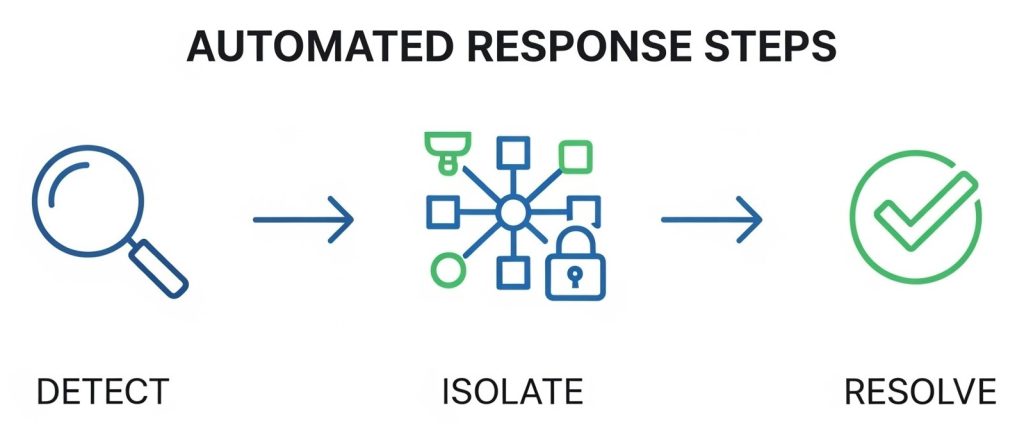Introduction: Why Response Time Matters More Than Ever
In the fast-paced world of IT operations, the speed at which a system detects and responds to an incident can mean the difference between minor glitches and major failures. Mean Time to Detect (MTTD) and Mean Time to Respond (MTTR) are two crucial metrics used to measure the effectiveness of an organization’s incident management. Fortunately, automation is revolutionizing both.
Let’s explore how.
🔗 Top 5 Security Automation Tools Every Business Should Know
How Automation Reduces Mean Time to Detect (MTTD)
What is MTTD?
MTTD measures the average time it takes to detect an incident from the moment it occurs. A lower MTTD means quicker awareness of issues.
How Automation Improves Detection
Automation tools like SIEM systems, AIOps, and log monitoring software continuously scan logs, metrics, and user behavior. Unlike manual monitoring, these tools:
- Instantly flag anomalies
- Trigger real-time alerts
- Run 24/7 without fatigue

➡️ Example: A system using Splunk or Datadog can detect a DDoS attack within seconds—something a manual team might take minutes or even hours to realize.
Reducing Mean Time to Respond (MTTR) Through Automation
What is MTTR?
MTTR refers to the average time taken to resolve an issue once detected. This includes investigation, diagnosis, remediation, and validation.
🔗 Read more on Gartner about MTTR
Automation in Response Actions
Once an alert is triggered, automated systems can initiate predefined response actions such as:
- Isolating affected systems
- Restarting services
- Rolling back recent updates
- Notifying the response team
🔗 Gartner’s definition of MTTR or IBM’s guide to IT automation
With tools like PagerDuty, ServiceNow, or AWS Lambda, these actions are executed within seconds, slashing MTTR dramatically.

💡 Key Insight: Automation doesn’t just notify — it acts.
From Reactive to Proactive: Predictive Automation
Thanks to AI and machine learning, automation has moved beyond reaction. Modern platforms predict failures before they occur using behavior analysis and trend detection.
- AI-based platforms like Dynatrace or New Relic identify patterns and recommend proactive fixes.
- Automated scripts can patch vulnerabilities as soon as they are found.
As a result, businesses are moving toward zero-touch incident management.
Business Impact of Lower MTTD & MTTR
| Benefit | Outcome |
|---|---|
| Faster Incident Resolution | Reduced system downtime and revenue loss |
| Improved Customer Experience | Higher reliability builds customer trust |
| Efficient IT Team Workflows | More time spent on innovation than firefighting |
| Stronger Security Posture | Threats are handled before causing major damage |
Tools That Help Automate MTTD and MTTR
Monitoring & Detection
- Splunk
- Nagios
- Datadog
- Elastic Stack (ELK)
Automated Response
- PagerDuty
- Opsgenie
- AWS Lambda
- ServiceNow
AI & Predictive Automation
- Dynatrace
- New Relic
- Moogsoft
Real-World Example: Automation in Action
Case Study: A Financial Services Firm
This company implemented AI-powered AIOps for log monitoring and automated rollback scripts for application failures.
- MTTD dropped from 25 minutes to under 3 minutes
- MTTR was cut from 45 minutes to just 7 minutes
This not only saved thousands of dollars per incident but also improved compliance and customer satisfaction.
Internal Automation & Long-Term Gains
By integrating automation into the incident lifecycle:
- MTTD becomes real-time
- MTTR becomes near-instantaneous
As a result, IT teams can shift from firefighting to value creation.
Final Thoughts: Automation Is No Longer Optional
In today’s digital ecosystem, automation is a strategic enabler. It helps businesses maintain uptime, improve agility, and reduce risk. Whether you’re a startup or an enterprise, investing in the right tools for automating detection and response is crucial for resilience and growth.








